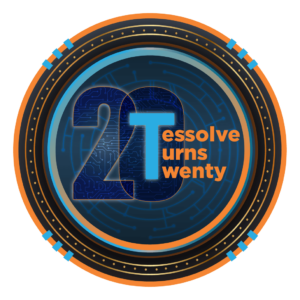The evolution of mobile communication standards is advancing to the next level with the emergence of 5G technology, which aims to connect devices, machines, businesses, and people. While 5G technology has been deployed in some developed markets over the past two years, developing countries like India have conducted 5G pilot trials before launching nationwide deployments.
Although the initial rollout of 5G is primarily focused on traditional mobile applications, its unique combination of ultra-low latency, carrier-class reliability, high scalability, and ubiquitous coverage has the potential to revolutionize innovation across multiple vertical industries in the future. So, here in this blog, we will explore 5G Networks and various trends, challenges, and opportunities associated with it.
5G Networks: Next Generation of Mobile Communication
5G network technology aims to deliver faster data speeds, lower latency, higher reliability, and greater network capacity than previous generations of mobile networks (such as 4G, 3G, and 2G). The 5G network infrastructure uses a combination of advanced radio frequencies, network architecture, and software to support a range of new and innovative applications, such as virtual and augmented reality, autonomous vehicles, smart cities, and industrial automation.
The emergence of 5G technology can transform various industries by enabling new levels of efficiency, productivity, and innovation through seamless connectivity between devices. To support this innovation, Tessolve, with its extensive technical expertise in wireless and wired markets, provides 5G testing services.
Tessolve’s solutions and services can assist in the development of 5G technology and help bring finished products to market sooner, thus supporting the transformative potential of 5G.

Challenges Associated With the 5G Networks
The implementation of 5G networks also presents several challenges that must be addressed. Here are some of the key challenges with the 5G networks:
- Infrastructure:
It requires a significant amount of new infrastructure, including additional cell towers, fiber optic cables and other related equipments. Building this infrastructure newly can be expensive and time-consuming. - Spectrum:
It requires a significant amount of new spectrum to operate effectively. However, finding and allocating new spectrum can be challenging, especially in urban areas with high demand for spectrum. - Security:
It may be more vulnerable to cyber threats than previous generations due to its increased complexity and use of new technologies. This makes security a critical challenge that must be addressed. - Interoperability:
It needs to be interoperable with existing networks to ensure seamless connectivity for users. However, achieving interoperability between different network technologies and devices can be challenging. - Overpriced testing:
Overpriced 5G testing can hinder innovation, limit competition and compromise the quality and safety of 5G technology. It is, therefore, important for testing services to be priced fairly and competitively to support the growth and development of the 5G industry. However, tessolve’s wireless testing services utilize a cost-effective process to identify issues within a specified timeframe. Tessolve is a reliable partner in providing on-time support and high-quality services, a key strength of our global business.

Unlocking Possibilities: The Power of 5G
The scope of 5G is best understood by scrutinizing the main usage models targeted by this megatrend namely enhanced mobile broadband (eMBB), ultra-reliable low-latency communications(URLLC), and massive machine type communications (mMTC).
Enhanced Mobile Broadband (eMBB)
This use case addresses the user-centric applications for wireless access to multimedia content, services, and data. The demand for mobile broadband services has continuously increased in the past decade, leading the industry to significantly enhance the mobile broadband capabilities.
Typical eMBB applications
- UHD video (4K, 8K) 3D video
- Virtual Reality (VR) and Augmented Reality (AR)
- Tactile Internet, Cloud gaming, and Broadband kiosks
- Real-time simulation and training
- Remote classroom, Hologram
Massive Machine Type Communication (mMTC)
This use case is characterized by a very large number of connected devices (e.g., a sensor network) typically transmitting relatively small payloads containing non-delay-sensitive data. These devices are required to be low cost and consume very low power.
Typical mMTC applications
- Smart Home
- Smart City
Ultra-Reliable Low Latency Communication (URLLC)
This use case has stringent requirements for capabilities such as throughput, latency, and availability. Some examples include wireless control of industrial manufacturing or production processes, remote medical surgery, distribution automation in a smart grid, and transportation safety.
Typical URLLC applications
- Industrial Automation
- E-health Care (Including Remote Surgery), hazardous environments, rescue missions
- Vehicular communication/ Autonomous Vehicles
- Self-driving vehicles
- Drones
Ultra-Reliable Low Latency Communication (URLLC)
This use case has stringent requirements for capabilities such as throughput, latency, and availability. Some examples include wireless control of industrial manufacturing or production processes, remote medical surgery, distribution automation in a smart grid, and transportation safety.
Typical URLLC applications
- Industrial Automation
- E-health Care (Including Remote Surgery), hazardous environments, rescue missions
- Vehicular communication/ Autonomous Vehicles
- Self-driving vehicles
- Drones
Why Tessolve?
At Tessolve, our testing services are designed to identify issues through a low-cost process within a specified timeframe, which can help improve the product’s quality and accelerate its release to market.
We are known for our reliability and commitment to providing excellent customer service. As a trusted partner, Tessolve can help businesses navigate the complexities of 5G testing and provide the support needed to bring their products to market successfully.
Overall, Tessolve’s expertise, cost-effective testing solutions, and commitment to customer satisfaction make it a compelling choice for businesses looking to develop and test 5G products.
Conclusion
In conclusion, 5G networks have the potential to revolutionize the way we live, work, and communicate. The high-speed and low-latency capabilities of 5G technology will enable innovative new applications and services, creating new business opportunities across various sectors. However, deploying 5G networks also comes with significant challenges, including cost, infrastructure, and security concerns.



